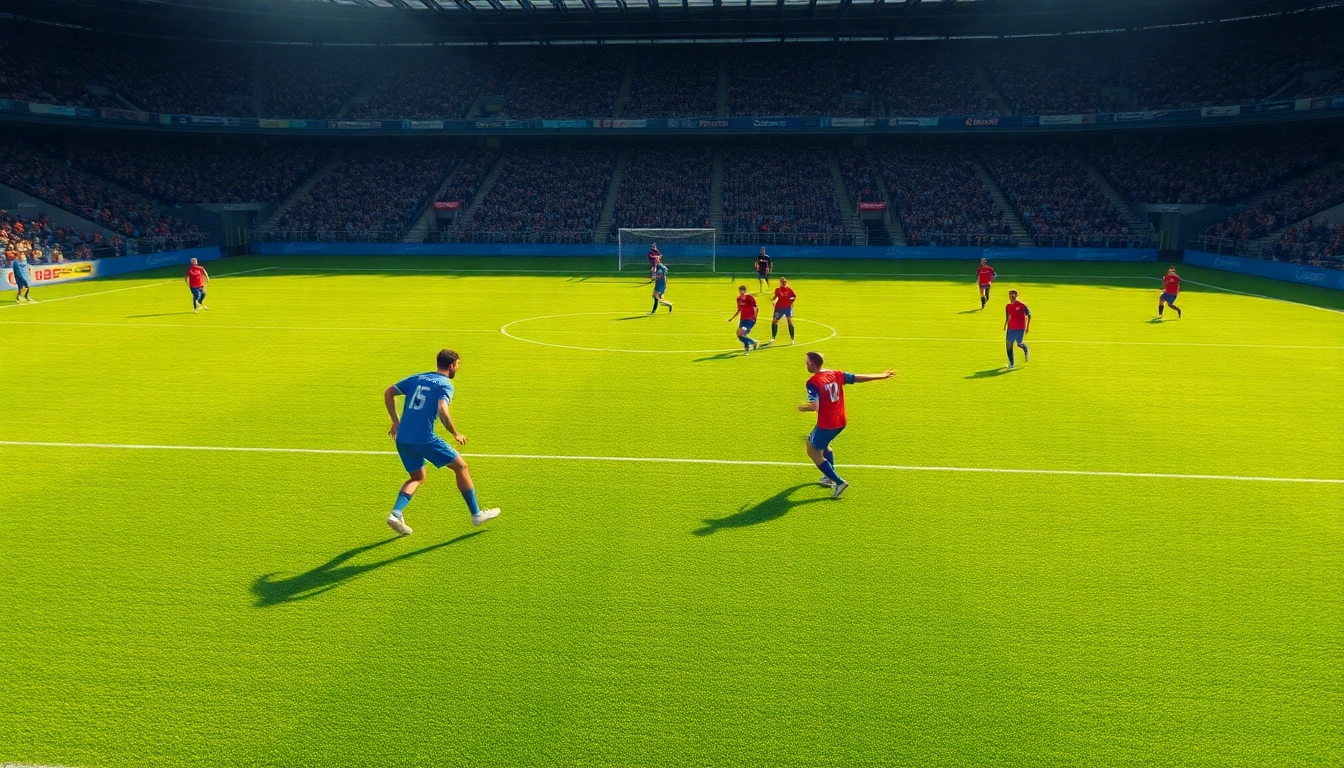The Importance of a Golf Swing Training Aid
Golf is often described as a game of precision, power, and finesse, requiring a perfect blend of technique and strategy. Whether you’re a novice looking to grasp the essentials or a seasoned player aiming to shave critical strokes off your game, utilizing a golf swing training aid can significantly enhance your performance. These devices help bridge the gap between understanding the mechanics of a golf swing and executing it flawlessly on the course. However, understanding their importance requires a closer look at what they are, their benefits, and some common misconceptions surrounding their use.
What is a Golf Swing Training Aid?
A golf swing training aid is any tool designed to help golfers improve their swing mechanics. These aids come in various forms, such as alignment sticks, weighted club attachments, motion sensors, and even specialized training software. Each aid is intended to correct specific aspects of the swing, promote good habits, and increase overall efficiency. By focusing on technique, these tools help golfers develop muscle memory, leading to more consistent swings during actual play.
Benefits of Using Training Aids
The benefits of utilizing a golf swing training aid are manifold:
- Improved Technique: Training aids provide real-time feedback, which allows golfers to adjust their swings properly. For instance, alignment sticks can ensure your body position is correct, while weighted clubs can help build strength.
- Increased Muscle Memory: Regular practice with training aids can engrain the correct movements into muscle memory. Over time, this leads to a more natural swing, even under pressure.
- Objective Assessment: Many aids come with technology that tracks and analyzes swing data. This information can guide players in making adjustments and setting realistic goals.
- Portability: The majority of training aids are lightweight and easy to transport, making them accessible to practice at the driving range, on the course, or at home.
Common Myths and Misconceptions
Despite their advantages, several myths about golf swing training aids persist. Let’s debunk a few common misconceptions:
- Training Aids are Only for Beginners: Many believe that only novices need aids, but experienced golfers can benefit from them to fine-tune their skills and combat bad habits.
- They Will Fix Your Swing Automatically: Aids are tools to assist in practice, not magical solutions. Consistent effort and the ability to interpret feedback are crucial for improvement.
- Using Aids Will Make You Reliant on Them: When correctly integrated into practice, aids can foster independence as golfers build skills that translate into better performance on the course.
Choosing the Right Golf Swing Training Aid
Factors to Consider When Selecting
Choosing the right training aid involves several considerations:
- Your Skill Level: Identify whether you need foundational tools for beginners or advanced aids that focus on becoming a more competitive player.
- Specific Goals: Whether it’s improving swing tempo, enhancing strength, or correcting alignment, knowing your aims can help narrow your options.
- Ease of Use: Look for aids that are user-friendly and can be incorporated into your existing practice routine seamlessly.
- Budget: Prices can vary widely. Assess how much you are willing to invest in training aids and find options within your financial comfort zone.
Types of Aids Available
Golf swing training aids come in various designs, each targeting specific aspects of the swing:
- Alignment Sticks: Simple yet effective, these sticks help golfers achieve proper stance and alignment.
- Weighted Clubs: These aids help strengthen swing muscles and improve swing speed.
- Swing Trainers: Devices that guide your club path and body position through various drill patterns.
- Video Analysis Tools: Software applications that provide insights into swing mechanics through recorded footage.
Comparison: Popular Training Aids
Given the plethora of training aids available, comparing some of the most popular methods can provide clarity:
| Training Aid | Best For | Key Features |
|---|---|---|
| Align & Taper | Alignment Correction | Two flexible sticks for targeting body alignment. |
| Super Speed Golf | Strength and Speed | A set of light and heavy clubs to enhance swing speed. |
| Lag Shot | Tempo Training | Club designed to improve swing rhythm and timing. |
| Zepp Golf Sensor | Complete Swing Analysis | Smart device that attaches to the glove, providing feedback on various swing metrics. |
Implementing Your Training Aid Effectively
Proper Use Techniques
Maximizing the effectiveness of your golf swing training aid depends on how well you implement it in practice. Here are some tips:
- Your Setup Matters: Always start with a proper setup, ensuring that the training aid is positioned correctly relative to your body and stance.
- Practice Slowly: Begin your drills slowly to allow your body to adapt to new movements without rushing.
- Focus on Quality Over Quantity: Instead of numerous swings, focus on executing the correct technique with fewer repetitions.
Creating a Practice Routine
Incorporating training aids into a practice routine can yield better results. Here’s how to structure one:
- Warm-Up: Begin all sessions with stretches and a warm-up to prepare your body.
- Incorporate Various Aids: Switch between different aids focusing on various aspects of your swing, i.e., alignment, power, and tempo.
- Monitor Progress: Keep a log of your practice sessions that records what you worked on and how well you performed.
- End with Reflection: Conclude practice by reflecting on improvements and areas still requiring work.
Avoiding Common Mistakes
While training aids are beneficial, they can become counterproductive without proper methods:
- Overuse: Relying solely on a training aid can lead to neglecting natural swing evolution. Use aids periodically and not as a crutch.
- Ignoring Feedback: Pay attention to the feedback from the aids and adjust techniques accordingly. Ignoring the information provided can stall progress.
- Inconsistent Practice: Consistency is key in seeing improvement. Develop a routine and commit to regular practice sessions.
Tracking Progress and Measuring Improvement
Setting Realistic Goals
Setting clear and achievable goals is fundamental for tracking your progress. Consider these guidelines:
- Short-Term Goals: Focus on aspects of your swing you want to improve in the immediate weeks.
- Long-Term Goals: Think about how you want your overall game to improve over the season.
- SMART Goals: Utilize the SMART criteria (Specific, Measurable, Achievable, Relevant, Time-bound) to make your goals action-oriented.
Utilizing Technology for Analysis
Technology can significantly enhance your understanding of your swing mechanics:
- Video Tools: Use video recording to analyze your swing from various angles. Look for inconsistencies or opportunities for improvement.
- Sensor Technology: Devices such as swing analyzers can deliver valuable metrics like club speed, launch angle, and swing path.
- Smartphone Applications: Several apps are available that can track your practice sessions and offer personalized drills based on your data.
Adjusting Techniques Based on Feedback
Feedback is essential to learning and improvement:
- Analyze Data Effectively: Regularly review the data from your training aids or gadgets to ensure you are heading in the right direction.
- Be Flexible: If a method isn’t showing results, be open to adjusting your approach or trying a different training aid.
- Seek Professional Guidance: Consider consulting with a coach who can interpret your feedback and provide personalized strategies for improvement.
Advanced Training Techniques with Aids
Integrating Training Aids into Swing Drills
To take your training to the next level, incorporating aids into specific drills can yield substantial benefits:
- Drills for Alignment: Use alignment sticks in conjunction with your practice to continually check your position at setup and during the swing.
- Power Drills: Weighted clubs can be included in drills that focus on increasing swing speed while maintaining technique.
- Tempo Drills: Using lag shot aids during rhythm drills can enhance your timing and smoothness of motion.
Combining Aids with On-Course Practice
Implementing what you have learned from training aids on the course is essential:
- Mindful Practice: As you play, apply the techniques refined with your aids, consciously focusing on grip, stance, and swing path.
- Simulated Rounds: Use a training aid during practice rounds to simulate conditions regularly; this can help build comfort when the stakes are higher.
- Partner Practice: Play with someone who understands your goals; have them provide insight into your technique while on the course.
Success Stories: Golfers Who Improved with Aids
Numerous professional and amateur golfers have reported significant improvement using training aids. Here are a few notable stories:
Case 1: The Weekend Player – John, a mid-handicap golfer, struggled with consistent swing mechanics. After incorporating alignment sticks into his practice sessions, he observed a dramatic improvement in his stance and aim, leading to better accuracy on the course.
Case 2: The Competitive Golfer – Sarah, a junior golfer, utilized a weighted club during practice to enhance her muscle strength. This simple adjustment increased her driver swing speed by over 10%, allowing her to compete successfully in local tournaments.
Case 3: The Instructor’s Approach – A golf teacher named Mike integrated video analysis tools into his teaching. By recording his students’ swings and providing immediate feedback, they could identify and correct errors swiftly, which significantly improved their performance during competitions.



